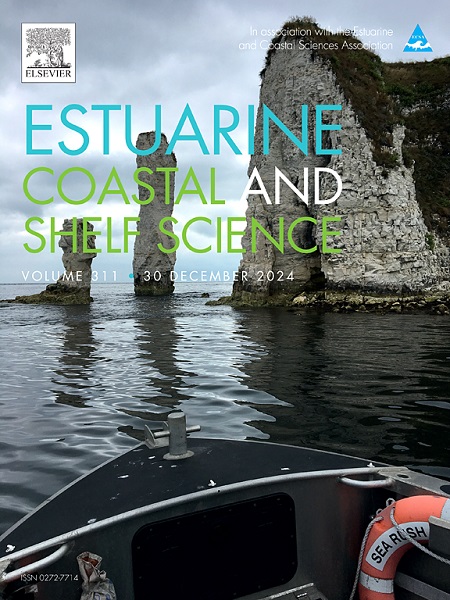高能系统在全球沙滩含水层孔隙水研究中代表性不足
IF 2.6
3区 地球科学
Q1 MARINE & FRESHWATER BIOLOGY
引用次数: 0
摘要
沙滩下的含水层充当了陆地-海洋地下水的管道,是活跃的生物地球化学反应器,改变了陆地-海洋界面的化学通量。潮汐和波浪振幅大的高能海滩的地下河口可能特别活跃,因为大量海水的交换和海洋衍生成分的运输深入地下。在这项研究中,我们首先提出了一种新的沿海能源制度分类,作为平均潮差和平均有效波高的函数,并定义了“高能”一词。我们建立了沿海能源制度的全球分布图,并根据其普遍的能源制度对沙滩含水层的孔隙水研究地点进行了分类。尽管它们对全球海岸线有广泛的贡献,但高能环境的孔隙水生物地球化学在很大程度上是未知的。通过对高能量海滩现有孔隙水研究的总结,我们揭示了形态学、水文学和生物地球化学的模式,描述了有前途的研究策略,并强调了在这些具有挑战性的环境中未来的研究途径。本文章由计算机程序翻译,如有差异,请以英文原文为准。

High-energy systems are underrepresented in global porewater studies of sandy beach aquifers
Aquifers beneath sandy beaches act as land-ocean conduits for groundwater and are active biogeochemical reactors modifying chemical fluxes across the land-sea interface. Subterranean estuaries of high-energy beaches with large tidal and wave amplitudes could be particularly reactive due to the exchange of large seawater volumes and transport of marine derived constituents deep into the subsurface. In this study, we first present a new classification for coastal energy regimes as a function of mean tidal range and mean significant wave height and define the term “high-energy”. We establish a global distribution map of coastal energy regimes and classify porewater study sites in sandy beach aquifers related to their prevalent energy regime. Despite their extensive contribution to the global shoreline, the porewater biogeochemistry of high-energy environments is largely unknown. Through a summary of the few existing porewater studies at high-energy beaches we reveal patterns in morphology, hydrology, and biogeochemistry, describe promising research strategies, and highlight future research avenues in these challenging environments.
求助全文
通过发布文献求助,成功后即可免费获取论文全文。
去求助
来源期刊
CiteScore
5.60
自引率
7.10%
发文量
374
审稿时长
9 months
期刊介绍:
Estuarine, Coastal and Shelf Science is an international multidisciplinary journal devoted to the analysis of saline water phenomena ranging from the outer edge of the continental shelf to the upper limits of the tidal zone. The journal provides a unique forum, unifying the multidisciplinary approaches to the study of the oceanography of estuaries, coastal zones, and continental shelf seas. It features original research papers, review papers and short communications treating such disciplines as zoology, botany, geology, sedimentology, physical oceanography.

 求助内容:
求助内容: 应助结果提醒方式:
应助结果提醒方式:


